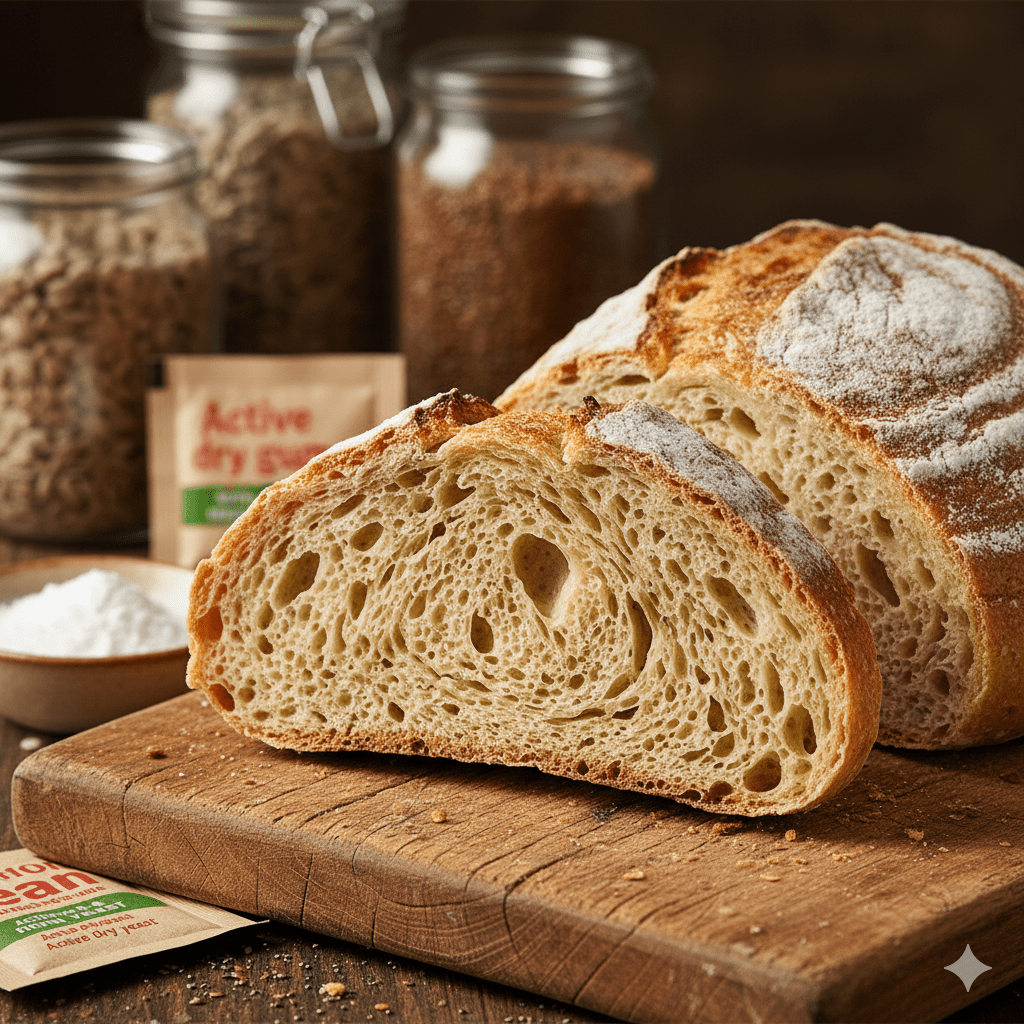What Exactly is Gluten, Anyway?
First, know your enemy. Gluten is a protein found in wheat, rye, and barley. It’s the magical net that gives traditional bread its chewy, airy structure. It’s what makes dough stretchy and traps gas from yeast. For those with celiac disease or sensitivity, this protein triggers a harsh immune response. Consequently, avoiding it is a medical necessity, not a trend.Why Does Gluten Free Bread Behave Differently?
Remove gluten, and you lose that essential framework. The result is often a dense, gummy, or crumbly disaster. Bakers must become architects. They rebuild the structure using a blend of alternative flours and binders. It’s a culinary high-wire act. The goal is to mimic what nature already perfected in wheat.The Gluten Free Flour Arsenal
Forget using a single flour. The secret to great gluten free bread is a blend. Rice flour provides a neutral base. Tapioca starch adds chew and a crisp crust. Potato starch brings unbelievable softness and moisture. Then come the power players: sorghum, millet, or oat flour for flavor and nutrition. It’s a team sport.The Binders: Xanthan Gum and Psyllium Husk
This is where the real magic happens. Without binders, your loaf will simply fall apart. Xanthan gum, a fermented sugar, provides stickiness and elasticity. Psyllium husk powder, however, is the game-changer. It absorbs water beautifully, creating a stretchy, workable dough that feels almost like the real thing. It’s a true revolution for home bakers.Is Gluten Free Bread Healthier For You?
Not necessarily. This is a crucial point. Many commercial loaves are lower in fiber and higher in sugar and fat to improve taste and texture. According to a TheTakeOut.com Report, some are essentially junk food in disguise. Always read the label. The health benefit comes from avoiding gluten, not from the bread itself.Decoding the Supermarket Aisle
Navigating the store’s freezer section requires a keen eye. Look for brands that use whole grains and seeds. Check the sugar and sodium content. Don’t be fooled by “ancient grains” marketing if the first ingredient is starch. The best loaves often live in the freezer, as they lack the preservatives of their shelf-stable cousins.The Art of the Home Bake
Store-bought is convenient, but homemade is a revelation. You control every ingredient. You can make it taste exactly how you want. Sure, it’s a project. But the smell of a fresh-baked loaf filling your kitchen? That’s a victory. It’s a satisfying middle finger to every bad loaf you’ve ever endured.Essential Tips for Baking Success
First, weigh your ingredients. Baking is a science, and precision matters. Second, don’t over-mix the batter; it’s not traditional dough. Third, let the batter rest before baking. This allows the flours to hydrate fully. Finally, use a digital thermometer. Your loaf is done at an internal temperature of 205-210°F (96-99°C).The Toasting Imperative
Let’s be real. Most gluten free bread is better toasted. The heat crisps the exterior and warms the interior, masking any slight gumminess. It transforms a mediocre slice into a worthy vehicle for avocado, jam, or a fried egg. Embrace the toaster. It is your most loyal ally in this journey.Pairing Your Perfect Slice
Now for the fun part. That beautiful slice you’ve procured or baked deserves good company. For instance, a thick slab of ripe tomato with basil and olive oil. Or perhaps a rich, creamy cheese. For more inspired pairings, explore our guide to artisan cheese and charcuterie boards.Common Pitfalls and How to Avoid Them
A gummy center usually means under-baking. Use that thermometer. A crumbly loaf often needs more binder or a longer rest time. A dense brick might be due to old baking powder or over-measuring flour. Remember, this is a learning process. Every failure is a lesson for the next bake.The Future is Flavorful
The landscape of gluten free bread is brighter than ever. Artisanal bakeries are popping up, dedicated solely to the craft. Home bakers are sharing revolutionary recipes online. We are moving beyond mere imitation into a new world of delicious possibility. The days of the sad, crumbly slice are numbered.Related Stories You’ll Love: – Navigating the Gluten-Free Pasta Aisle: A Connoisseur’s Guide – Is Sourdough Actually Gluten Free? The Surprising Truth
Feeling Inspired? If you have a story about gluten-free living, a recipe to share, or a brand that needs to be seen, we should talk. Advertise with us and connect with a community that’s passionate about great food.
